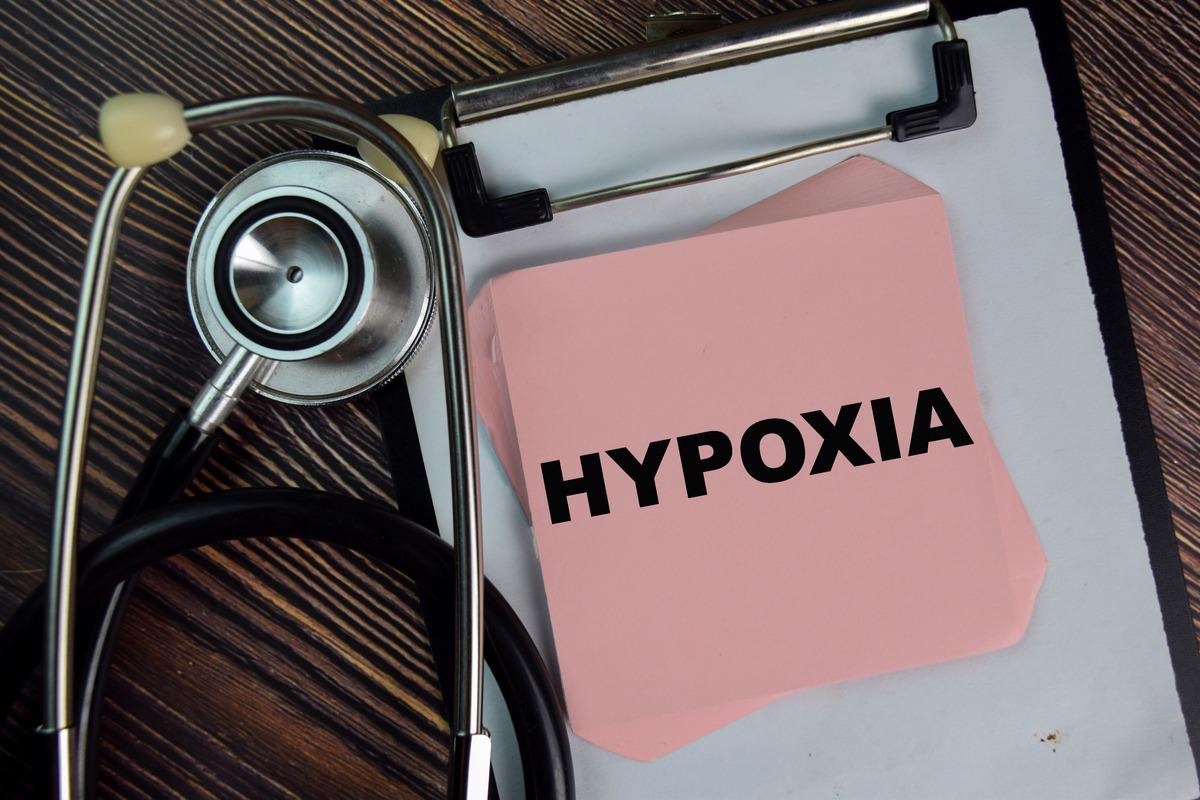In a recent study published in Respiratory Medicine, researchers reported that silent hypoxia was not unique to coronavirus disease 2019 (COVID-19).
 Study: Silent hypoxia is not an identifiable characteristic in patients with COVID-19 infection. Image Credit: bangoland/Shutterstock
Study: Silent hypoxia is not an identifiable characteristic in patients with COVID-19 infection. Image Credit: bangoland/Shutterstock
Background
Silent hypoxemia syndrome, well-tolerated hypoxemia with relatively less dyspnea, and its colloquial term ‘happy hypoxia’ were introduced in journalistic and clinical settings to describe the physiologic response of patients to pneumonitis caused by severe acute respiratory syndrome coronavirus-2 (SARS-CoV-2). Hypoxemia relative to the fraction of inspired oxygen (FiO2) is believed to be a better marker for COVID-19 severity than absolute hypoxemia.
The peripheral oxygen saturation (SpO2)-to-FiO2 ratio (SFR) is used analogously with arterial oxygen tension (PaO2)-to-FiO2 ratio (PFR), which describes the severity of acute respiratory distress syndrome (ARDS). The respiratory rate oxygenation (ROX) index quantified as the SFR-to-respiratory rate ratio might predict the need to intubate COVID-19 patients. The association between higher respiratory rate and failure of non-invasive oxygenation is contradictory to the notion that asymptomatic hypoxemia might be associated with poorer outcomes.
About the study
In the present retrospective study, researchers assessed whether happy hypoxia in COVID-19 patients was an identifiable characteristic in COVID-19 ARDS and associated with the need for intensive care.
The authors performed an observational cohort study of adults admitted to Nottingham University Hospitals with a suspected or confirmed diagnosis of COVID-19. Patient-related data were obtained from electronic records from February 21, 2020, to August 31, 2021. Suspected patients were included in the COVID-19-positive cohort if found positive for SARS-CoV-2 within 10 days.
Nursing observations were collected when a patient was suspected of or confirmed with COVID-19 for 14 days until ICU admission, discharge, or in-hospital death. Patient outcomes (ICU admission and all-cause mortality within 60 days) and primary diagnosis codes were extracted. FiO2, SFR, and ROX scores were computed when not explicitly documented. Whether happiness, i.e., impaired physiologic response to hypoxemia, was associated with poorer outcomes was evaluated by modeling the physiologic response to (absolute or relative) hypoxemia in the COVID-19 cohort alone.
Findings
From the 14,214 complete observations among 1,586 patients, more than 75% were positive for COVID-19 within 10 days of onset of symptoms. COVID-19 patients had a significantly higher temperature, respiratory rate, and lower heart rate than non-COVID-19 patients. Moreover, the COVID-19 cohort had a lower ROX index (3.1/min), implying a higher respiratory rate for a given degree of relative hypoxemia.
An increase of 0.3 breath per minute (Bpm) in respiratory rate among all patients was observed with every 1% decrease in SpO2. Similarly, a 0.1 Bpm decrease was noted for every 10 unit decrease in SFR among all patients. Overall, COVID-19 patients with severe absolute hypoxemia had a 1 Bpm higher respiratory rate, 7 bpm lower heart rate, and 0.3 °C higher temperature than non-COVID-19 patients.
For those in the COVID-19 cohort with severe relative hypoxemia, the respiratory rate was higher by 2 Bpm, 10 bpm lower heart rate, and 0.2 °C higher temperature than non-COVID-19 patients. The ROX index was 2.088/min lower in COVID-19 patients when adjusted for ethnicity and age, indicating a higher respiratory rate across any given degree of relative hypoxemia.
Among the COVID-19 patients, 67% of patients were not escalated to intensive care despite hypoxemia. Of these, 396 survived ICU stay, and 122 died within 60 days of symptom development. Across the COVID-19 patients with severe relative hypoxemia, ICU-admitted patients had a 4 Bpm higher respiratory rate and 8 bpm higher heart rate than ward patients. The respiratory rate was higher for deceased patients by 5 Bpm and heart rate by 10 bpm.
Similarly, for COVID-19 patients with absolute hypoxemia, those under intensive care had a 7 bpm higher heart rate and 4 Bpm higher respiratory rate than survivors. Those who did not survive had a 5 Bpm higher respiratory rate and 8 bpm higher heart rate than survivors on ward-based care alone. After adjusting for ethnicity and age, the ROX index was significantly lower in ICU-admitted and deceased patients than survivors.
Conclusions
The study results showed that COVID-19 patients have a markedly distinct physiologic response to hypoxemia (higher respiratory rate) to any level of hypoxemia than non-COVID-19 subjects. While asymptomatic hypoxemia might be a phenomenon in any patient with respiratory failure, it (happiness) is not observed more frequently in COVID-19 patients than in non-COVID-19 patients.
The data presented here refuted that COVID-19 patients were more ‘happy’ with hypoxemia than non-COVID-19 subjects. The authors acknowledge that there were no compelling reasons to support a therapeutic approach for COVID-19 patients with respiratory failure other than currently available, proven standard ARDS care, nor do the findings support that physiologic happiness was associated with poorer outcomes.